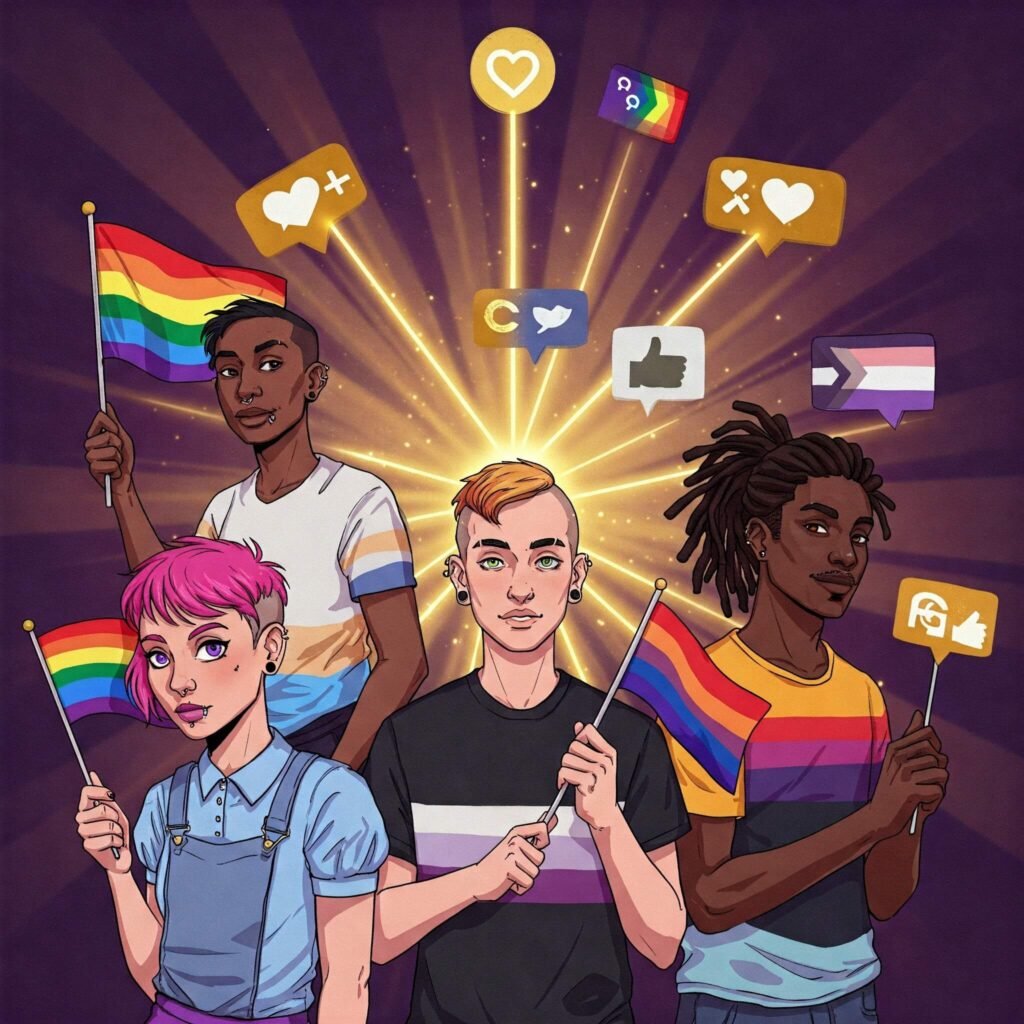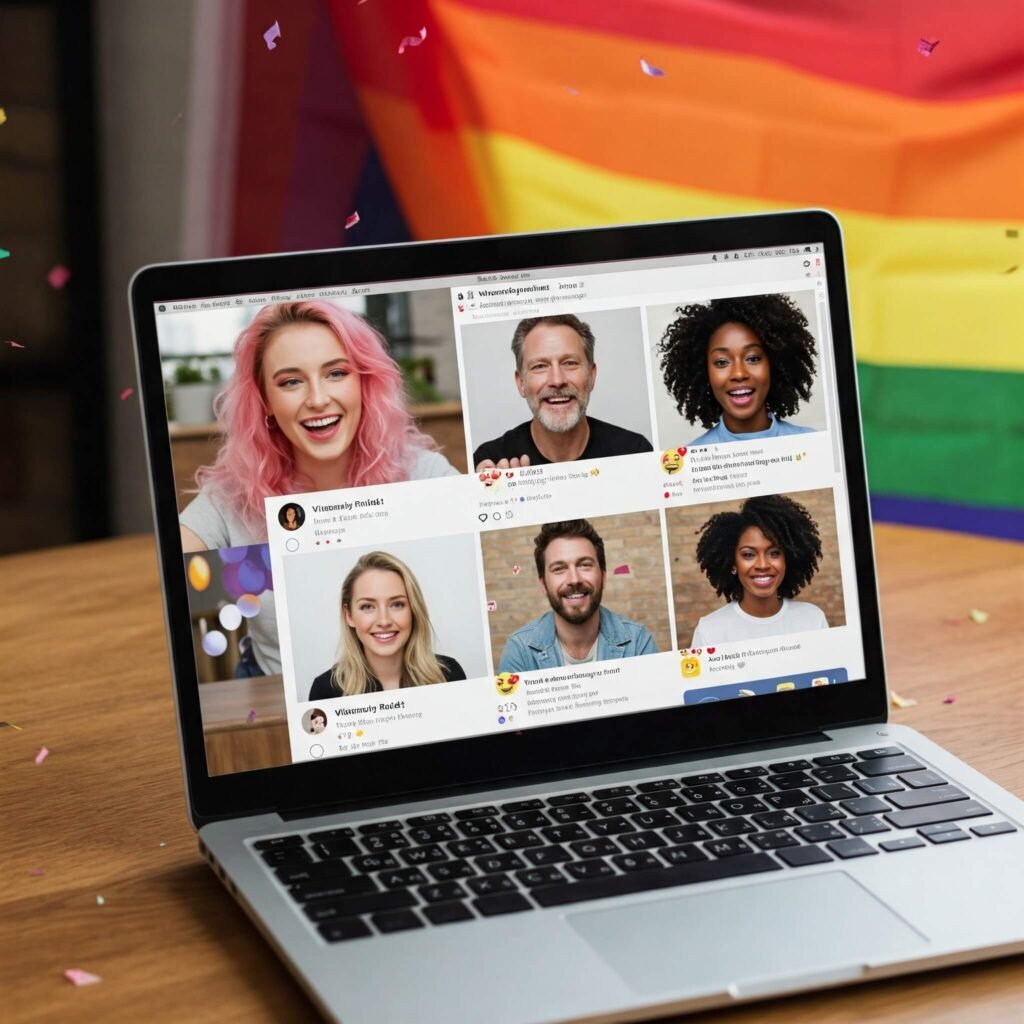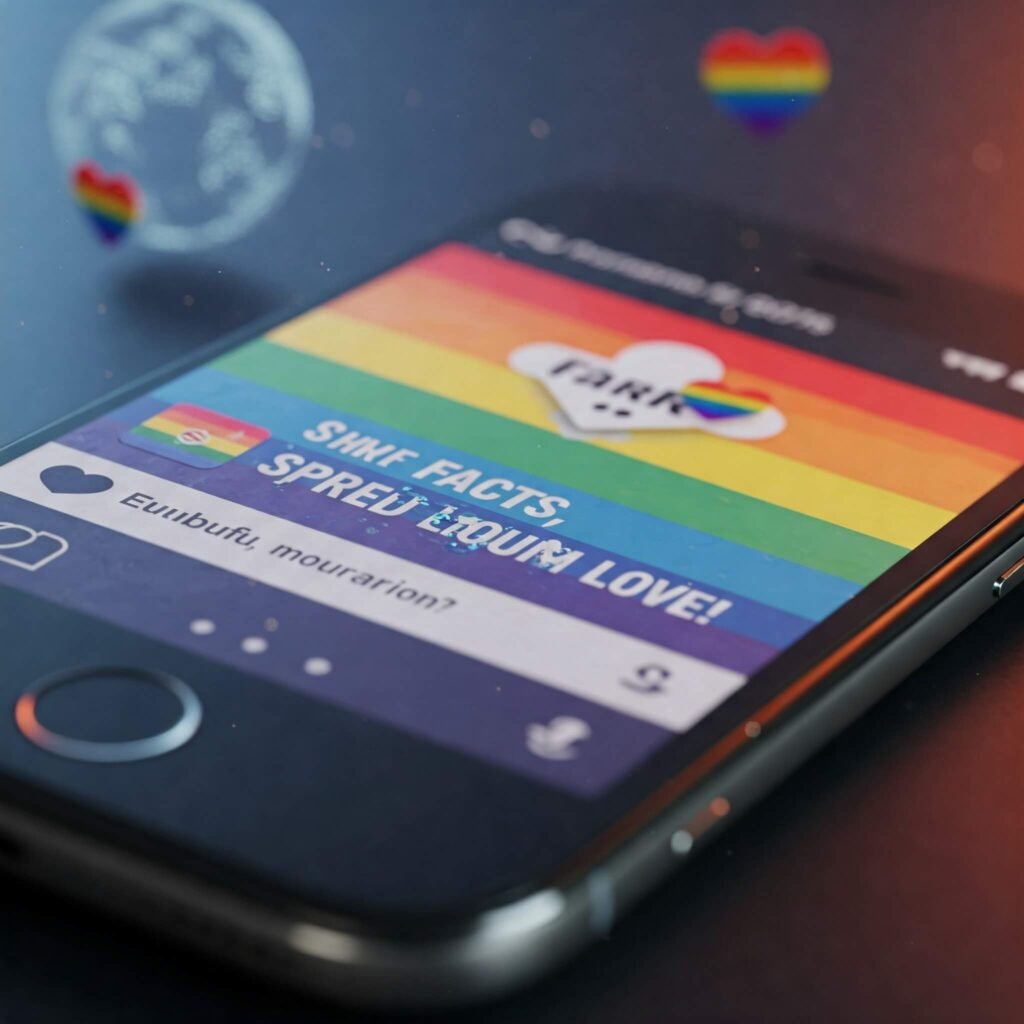Social media has transformed the landscape of LGBTQ+ activism, serving as a powerful tool for advocacy, community building, and driving societal change. Platforms like X, Instagram, TikTok, and Twitter have empowered individuals and organizations to amplify marginalized voices, challenge discrimination, and foster global solidarity. This blog explores the dynamic role of social media in LGBTQ+ activism, highlighting its impact, challenges, and actionable strategies for leveraging these platforms effectively.

Why Social Media Matters for LGBTQ+ Activism
Social media’s role in LGBTQ+ activism is pivotal because it provides an accessible, global platform for sharing stories and mobilizing support. Unlike traditional media, which often gatekeeps narratives, social media allows anyone with an internet connection to advocate for change. According to a 2023 Pew Research study, 64% of LGBTQ+ adults in the U.S. use social media to engage with advocacy content, underscoring its significance.
Amplifying Marginalized Voices
One of the most transformative aspects of social media in LGBTQ+ activism is its ability to amplify voices that are often silenced. Activists like Alok Vaid-Menon and Jazz Jennings use platforms like Instagram to share personal experiences, educate followers, and challenge stereotypes. Hashtags such as #TransIsBeautiful and #LoveIsLove create digital spaces where individuals can find community and validation.
- Real-World Example: In 2020, the #BlackTransLivesMatter hashtag gained traction on Twitter, highlighting the intersectional struggles of Black transgender individuals. This movement spurred protests and policy discussions worldwide.
Building Global Communities
Social media transcends geographical barriers, enabling LGBTQ+ individuals in conservative regions to connect with supportive communities. Platforms like TikTok have become safe havens for youth exploring their identities, with creators like Jeffrey Marsh offering affirming content. These virtual spaces foster a sense of belonging, which is critical for mental health and activism.

How Social Media Drives Change in LGBTQ+ Advocacy
Social media’s role in LGBTQ+ activism extends beyond awareness to tangible outcomes. From fundraising to policy reform, these platforms are catalysts for change.
Mobilizing Campaigns and Protests
Social media has revolutionized how LGBTQ+ campaigns are organized. The 2015 U.S. Supreme Court decision on marriage equality was preceded by viral campaigns like #LoveWins, which garnered millions of posts on Twitter and Instagram. These efforts shaped public opinion and pressured policymakers.
- Case Study: In 2024, Indian activists used X to rally support for decriminalizing same-sex relationships, resulting in a landmark petition that gained international attention. The campaign’s viral hashtags reached over 10 million users, per X analytics.
Fundraising for LGBTQ+ Causes
Crowdfunding campaigns on platforms like GoFundMe, promoted via social media, have raised millions for LGBTQ+ organizations. For instance, The Trevor Project, a nonprofit focused on suicide prevention, leverages Instagram and TikTok to drive donations, raising over $2 million in 2023 alone.
Outbound Link: Learn more about The Trevor Project’s impactful work at The Trevor Project.
Influencing Policy and Corporate Accountability
Social media holds corporations and governments accountable. When a major brand was criticized for anti-LGBTQ+ policies in 2023, a Twitter boycott campaign led to a public apology and policy reversal within days. Similarly, activists use X to petition governments, as seen in the global push for trans-inclusive healthcare in 2024.
Challenges of Social Media in LGBTQ+ Activism
While social media is a powerful tool, it’s not without challenges. Understanding these hurdles is key to maximizing its potential in LGBTQ+ activism.
Combating Online Harassment
LGBTQ+ activists often face trolling, doxxing, and hate speech online. A 2022 GLAAD report found that 60% of LGBTQ+ social media users experienced harassment, which can deter activism. Platforms like X have introduced stricter moderation, but challenges remain.
- Actionable Tip: Use privacy settings and report abusive content promptly to create safer online spaces.
Navigating Algorithmic Bias
Social media algorithms can suppress LGBTQ+ content, labeling it as “sensitive” or reducing its reach. This shadowbanning affects visibility for activists. To counter this, creators use strategic hashtags and cross-platform posting to boost engagement.
Outbound Link: Read GLAAD’s insights on digital inclusivity at GLAAD.
Addressing Misinformation
Misinformation, such as false narratives about transgender healthcare, spreads rapidly online. Activists must combat this by sharing credible sources and engaging followers with fact-based content.

Strategies to Leverage Social Media for LGBTQ+ Activism
To harness social media’s role in LGBTQ+ activism effectively, consider these actionable strategies:
- Create Shareable Content: Use infographics, videos, and memes to make complex issues accessible. For example, a 2024 TikTok campaign simplified gender-affirming care policies, reaching 5 million views.
- Engage with Hashtags: Join trending conversations like #PrideMonth or #QueerJoy to increase visibility.
- Collaborate with Influencers: Partner with LGBTQ+ creators to expand your reach. A 2023 collaboration between Human Rights Campaign and TikTok influencers boosted voter registration among queer youth.
- Host Live Events: Use Instagram Live or X Spaces to discuss issues, answer questions, and build community in real-time.
- Monitor Analytics: Track post performance to refine your strategy. Tools like Instagram Insights help identify what resonates with your audience.
Outbound Link: Explore Human Rights Campaign’s advocacy tools at Human Rights Campaign.
The Future of Social Media in LGBTQ+ Activism
The role of social media in LGBTQ+ activism will continue to evolve as technology advances. Emerging platforms like decentralized networks could offer censorship-resistant spaces for advocacy. Additionally, AI-driven tools may enhance content creation, making activism more accessible. However, activists must remain vigilant about privacy and ethical concerns in these digital spaces.
Embracing Intersectionality
Future activism will prioritize intersectional narratives, addressing race, disability, and socioeconomic factors alongside LGBTQ+ issues. Social media’s role in amplifying these stories will be crucial for inclusive change.
Adapting to New Platforms
As younger audiences migrate to platforms like BeReal or future innovations, activists must adapt. Staying ahead of trends ensures continued relevance and impact.
Conclusion: Harnessing Social Media for Lasting Change
Social media’s role in LGBTQ+ activism is undeniable—it amplifies voices, builds communities, and drives policy change. By navigating challenges and leveraging strategic approaches, activists can maximize its potential. Whether you’re sharing a personal story or launching a global campaign, social media empowers you to create impact. Start today by posting, engaging, and advocating for a more inclusive world.





























